
30
WIRELESS 868 MHz TEMPERATURE
STATION
Instructions Manual
INTRODUCTION:
Congratulations on purchasing this Temperature Station
with wireless 868 MHz transmission of outdoor
temperature and display of indoor temperature and
humidity with comfort level indicator. It is further featuring
a DCF-77 radio controlled clock with calendar display.
With only four easy to use function keys, this innovative
product is ideal for use in the home or office.
THE TEMPERATURE STATION
LCD
Display
Function
Keys

31
FEATURES:
TEMPERATURE STATION
• DCF-77 Radio controlled time with manual setting
options
• Time reception ON/OFF
• 12/24 hour display
• Hour and minute display, seconds indicated by
flashing dot
• Time zone option ±12hours
• Date and month calendar display
• Temperature display in degrees Celsius (°C) or
Fahrenheit (°F) selectable
• Indoor and outdoor temperature display with
MIN/MAX recording
• Indoor humidity reading displayed as RH% with
MIN/MAX recordings
• All MIN/MAX temperature recordings show date
and time received
• All MIN/MAX recordings can be reset
• Indoor comfort level indicator - happy or sad face
icons
• Can take up to two outdoor transmitters
• LCD contrast setting
Foldable
stand
Hanging Hole
Battery
Cover

32
• Low battery indicator
•
Wireless transmission at 868 MHz
• Signal reception intervals at 4 seconds
• Wall mounting or table standing
THE OUTDOOR TRANSMITTER
• Remote transmission of
outdoor temperature to
weather station by 868 MHz
signal
• Wall mounting case
• Mounting at a sheltered place.
Avoid direct rain and sunshine
SETTING UP:
WHEN ONE TRANSMITTER IS USED
1. First, insert the batteries in the transmitter
(see “How to install and replace batteries
in the Temperature Transmitter” below).
2. Within 2 minutes of powering up the
transmitter, insert the batteries in the
Temperature Station (see “How to install
and replace batteries in the Weather
Station” below). Once the batteries are in
place, all segments of the LCD will light up
briefly. Following the indoor
temperature/humidity and the time as 0:00
will be displayed. If these information are
not displayed on the LCD after 60 seconds,
remove the batteries and wait for at least 60
seconds before reinserting them. Once the
indoor data is displayed user may proceed
to the next step.
3. After the batteries are inserted, the

33
Temperature Station will start receiving data
signal from the transmitter. The outdoor
temperature data (channel 1 and 2) should
then be displayed on the Temperature
station. If this does not happen after 2
minutes, the batteries will need to be
removed from both units and reset from step
1.
4. In order to ensure sufficient 868 MHz transmission
however, the distance between the Temperature
Station and the transmitter should not be more than
100 meters (see notes on “Positioning” and “868
MHz Reception”).
Note:
In the event of changing batteries of the units, ensure the
batteries do not spring free from the contacts. Always wait
at least 1 minute after removing the batteries before
reinserting, otherwise start up and transmission problems
may occur.
OPTIONAL CHANNEL 2 TEMPERATURE
PROBE
When the temperature probe is connected to the
temperature transmitter, the temperature station will
always display the outdoor temperature transmitter data in
channel 1, and the temperature recorded from the probe
in channel 2.
If the probe on remote temperature sensor is
unplugged, the "probe channel" will show "---", the
temperature data from the transmitter will still be
displayed.
The temperature probe can be connected to the
temperature transmitter anytime. There is no need to
reset the units. The Temperature Station will automatically

34
detect the temperature probe and will display the
temperature probe data in channel 2.
WHEN MORE THAN ONE TRANSMITTER IS USED
1. User shall remove all the batteries from the
Temperature Station and transmitters, and wait 60
seconds.
2. Insert the batteries in the first transmitter.
3. Within 2 minutes of powering up the first
transmitter, insert the batteries in the Temperature
Station. Once the batteries are in place, all
segments of the LCD will light up briefly. Following
the indoor temperature/humidity and the time as
0:00 will be displayed. If these information are not
displayed on the LCD after 60 seconds, remove the
batteries from both units and wait for at least 60
seconds before reinserting them.
4. The outdoor temperature data from the first
transmitter (channel 1 and 2) should then be
displayed on the Temperature Station. Also, the
signal reception icon will be displayed. If this does
not happen after 2 minutes, the batteries will need
to be removed from both units and reset from step
1.
5. If the temperature probe has been used, the
outdoor temperature from channel 2 will then be
displayed. Otherwise, the outdoor temperature will
display “---“.
Note:
The temperature probe from the first sensor
will always occupy “channel 2”. Channel 2 can
only be used for the temperature probe. If you
choose not to use the temperature probe, channel
2 will display “---“.
5. Insert the batteries in the second transmitter as
soon as the outdoor temperature readings from the
first transmitter are displayed on the Temperature
Station.

35
Note : User shall insert the batteries into the
second transmitter within 45 seconds after the
Temperature Station displays the information of the
first transmitter. Or immediately after reception of
the first transmitter is finished
6. The outdoor temperature from the second
transmitter and the "channel 3" icon should then be
displayed on the Temperature Station. If this does
not happen after 2 minutes, the batteries will need
to be removed from all the units and reset from
step 1.
7. In order to ensure sufficient 868 MHz transmission
however, the distance between the Temperature
Station and the transmitter should not be more than
100 meters (see notes on “Positioning” and “868
MHz Reception”).
HOW TO INSTALL AND REPLACE BATTERIES
IN THE TEMPERATURE STATION
The Temperature Station uses 2 x AA, IEC LR6, 1.5V
batteries. When batteries will need to be replaced, the low
battery symbol will appear on the LCD.
To install and replace the batteries, please follow the
steps below:
1. Insert finger or other
solid object in the
space at the bottom
center of the battery
compartment and lift
up to remove the
cover.
2. Insert batteries
observing the correct
polarity (see battery
compartment marking).
3. Replace battery cover.

36
HOW TO INSTALL AND REPLACE BATTERIES
IN THE TEMPERATURE TRANSMITTER
The Temperature Transmitter uses 2 x AAA, IECLR3,
1.5V batteries. To install and replace the batteries, please
follow the steps below:
1. Slide the battery cover downwards and remove.
2. Insert the batteries, observing the correct polarity
(see marking).
3. Replace the battery cover.
Note:
In the event of changing batteries in any of the units, all
units need to be reset by following the setting up
procedures. This is because a random security code is
assigned by the transmitter at start-up and this code must
be received and stored by the Weather Station in the first
three minutes of power being supplied to it.
BATTERY CHANGE:
It is recommended to replace the batteries in all units on
an annual basis to ensure optimum accuracy of these
units.
Please participate in the preservation of
the environment. Return used batteries
to an authorized depot.
This socket is only for the
external probe. Do not
apply power plug to it.
Optional
external probe

37
FUNCTION KEYS:
Temperature Station:
The Temperature Station has four easy to use function
keys.
SET key (Setting)
• Used to enter the set mode for the following
functions: LCD contrast, Time zone, Time
Reception ON/OFF, 12/24 hour display, Manual
time, Year, Date, and °C/°F settings.
• The year can only be displayed in the set mode
(not displayed in normal mode)
IN key (Indoor)
• Used to toggle between the current/ minimum /
maximum indoor temperature and humidity
• Press for over 3 seconds to reset the indoor
maximum and minimum temperature and humidity
records (will reset all records to current level)
Note: the Time/date information is only available
for MIN/MAX temperature data, and will be
changed to default time after the reset operation
• Change LCD contrast, time zone, Time Reception
ON/OFF, 12/24 hour display, hour, year, month,
day, and °C/°F in setting modes
Note: in 24hr time display mode, the day is set by
using the IN key. In 12hr time display mode, the
month is set by using the IN key
OUT key (Outdoor)
• Used to toggle between the current / minimum /
maximum outdoor temperature
Setting
Indoor Outdoor
Channel

38
• Press for around 3 seconds to reset the outdoor
maximum and minimum temperature records (will
reset all temperatures to current level of the relative
transmitter being reset - each transmitter’s data
must be reset separately)
Note: the time/date information of MIN/MAX data
will be reset to default time as well.
• Change minute, month, day in setting modes
Note: in 24hr time display mode, the month is set
by using the OUT key. In 12hr time display mode,
the day is set by using the OUT key
CH key (Channel)
• Toggle between the outdoor Temperature
Transmitters 1 and 2
• Exit manual setting mode
LCD SCREEN
Time
Low battery
indicator
(temperature
station)
Outdoor
reception
signal*
Indoor
Temperature
in °C or °F
Outdoor
Temperature
in °C or °F
Calendar
Outdoor
transmitter
Identification
number
Indoor confort
indicator
DCF Tower
Icon
(for time
reception)
Indoor
humidity
in RH%
Low battery
indicator
(transmitter)

39
* When the signal is successfully received by the Weather
Station, the outdoor transmission icon will be switched on.
(If not successful, the icon will not be shown on LCD). The
user can then easily see whether the last reception was
successful (icon on) or not (icon off). On the other hand,
the short blinking of the icon shows that a reception is
currently taking place.
DCF-77 RADIO CONTROLLED TIME
The time base for the radio-controlled time is a Cesium
Atomic Clock operated by the Physikalisch Technische
Bundesanstalt Braunschweig which has a time deviation
of less than one second in one million years. The time is
coded and transmitted from Mainflingen near Frankfurt via
frequency signal DCF-77 (77.5 kHz) and has a
transmitting range of approximately 1,500 km. Your radio-
controlled Temperature Station receives this signal and
converts it to show the precise time in summer or
wintertime.
The quality of the reception depends greatly on the
geographic location. In normal cases, there should be no
reception problems within a 1500km radius of Frankfurt.
Once the outdoor temperature is displayed on the
Temperature Station, the DCF tower icon in the clock
display will start flashing in the upper left corner. This
indicates that the clock has detected that there is a radio
signal present and is trying to receive it. When the time
code is received, the DCF tower becomes permanently lit
and the time will be displayed.
DCF reception is done twice daily at 02:00 and 03:00 am.
If the reception is not successful at 02:00 am, then the
next reception takes place the next hour and so on until
06:00am, or until the reception is successful. If the
reception is not successful at 06:00 am, then the next
attempt will take place the next day at 02:00 am.

40
If the tower icon flashes, but does not set the time or the
DCF tower does not appear at all, then please take note
of the following:
• Recommended distance to any interfering sources
like computer monitors or TV sets is a minimum of
1.5 - 2 meters.
• Within ferro-concrete rooms (basements,
superstructures), the received signal is naturally
weakened. In extreme cases, please place the unit
close to a window and/ or point its front or back
towards the Frankfurt transmitter.
• During nighttime, the atmospheric disturbances are
usually less severe and reception is possible in
most cases. A single daily reception is adequate to
keep the accuracy deviation below 1 second.
MANUAL SETTINGS
The following manual settings can be changed when
pressing the SET key for:
• LCD contrast setting
• Time zone setting
• Time reception ON/OFF setting
• 12/24-Hour setting
• Manual time setting
• Calendar setting
• Snooze setting
• °C/°F setting
• Weather forecast sensitivity
LCD CONTRAST SETTING:
LCD (flashing)

41
The LCD contrast can be set to 8 different levels to suit
the users needs (default LCD contrast setting is LCD 5).
To set the desired contrast level:
1. Press the IN key to select the level of contrast
desired.
2. Press the SET key to confirm and enter the “Time
Zone setting” or exit the setting mode by pressing
the CH key
TIME ZONE SETTING
The time zone default of the Temperature Station is 0. To
change to another time zone:
1. Press the SET key after completing the LCD
contrast setting in order to enter the time zone
setting (flashing).
2. Using the IN key, set the time zone. The range
runs from 0 to +12 and then runs from -12 back to
0 in consecutive 1 hour intervals.
3. Press the SET key to confirm and enter the “Time
Reception ON/OFF setting” or exit the setting
mode by pressing the CH key
TIME RECEPTION ON/OFF SETTING
In area where reception of the DCF-77 time is not
possible, the DCF-77 time reception function can be
Time Zone (flashing)
Flashing

42
turned OFF. The clock will then work as a normal Quartz
clock. (Default setting is ON).
1. The digit “ON” will start flashing on the LCD.
2. Use the IN key to turn OFF the time reception
function.
3. Confirm with the SET key and enter the “12/24-
Hour Display setting” or exit the setting mode by
pressing the CH key.
Note:
If the Time Reception function is turned OFF
manually, the clock will not attempt any reception of
the DCF time as long as the Time Reception OFF
function is activated. The Time Reception icon will not
be displayed on the LCD.
12/24 HOUR TIME DISPLAY SETTING
1. After setting time reception ON/OFF, press the
SET key, “12h” or “24h” flashes in the LCD.
2. Press the IN key to select the “12h” or “24h” display
mode.
3. Press the SET again to confirm and to enter the
“Manual Time setting” or exit the setting mode by
pressing the CH key
Note: When 24h mode display is selected, the calendar
format will be date and month display.
When 12h mode display is selected, the calendar
format will be month and date display.
Flashing

43
MANUAL TIME SETTING
In case the Temperature Station is not able to detect the
DCF-signal (disturbances, transmitting distance, etc.), the
time can be manually set. The clock will then work as a
normal Quartz clock.
To set the clock:
1. The hour and minutes digits start flashing in the
time display section.
2. Use the IN key to adjust the hours and the OUT
key to adjust the minutes. If you hold the key while
you adjust, the hours move 1 hour and the minutes
move 5 minutes.
3. Confirm with the SET key and enter the “Calendar
Setting” or exit the setting mode by pressing the
CH key
Note:
The unit will still try and receive the signal despite it being
manually set. When it does receive the signal, it will
change the manually set time into the received time.
During reception attempts the DCF tower icon will flash. If
reception has been unsuccessful, then the DCF tower
icon will not appear but reception will still be attempted the
following day.
Minutes
(flashing)
Hours
(flashing)

44
CALENDAR SETTING:
Year (flashing) Date Month
(flashing) (flashing)
The date default of the Temperature Station is 1. 1. of the
year 2006. Once the radio-controlled time signals are
received, the date is automatically updated. However, if
the signals are not received, the date can also be set
manually. To do this:
1. Using the IN key, set the year required. The range
runs from 2006 to 2039 (default is 2006).
2. Press the SET key to enter the month and date
setting mode.
3. Press the IN (or OUT) key to set the date and the
OUT (or IN) key to set the month required.
4. Confirm with the SET key and enter the “Snooze
setting” or exit the setting mode by pressing the
CH key.
SNOOZE SETTING
Important:
The snooze setting in this Temperature Station will
not have any effect in this unit performance. This
feature is only available in enhance model with alarm
function. Simply press the SET key to skip this setting
and enter the “°C/°F setting” or exit the setting mode
by pressing the CH key.

45
Indoor
Relative
Humidity %
°C/°F SETTING:
The default temperature reading is set to °C (degree
Celsius). To select °F (degree Fahrenheit):
1. The “°C” will be flashing, use the IN key to toggle
between “°C” and “°F”.
2. Once the desired temperature unit has been
chosen, confirm with the SET key and enter the
“Weather forecast sensitivity setting” or exit the
manual setting modes.
WEATHER FORECASTING ICON SENSITIVITY
SETTING
Important:
The weather forecast sensitivity setting in this
Temperature Station will not have any effect in this
unit performance. This features is only available in
enhance model with weather forecast feature. Press
the SET key to finish and exit the manual setting
mode.
INDOOR HUMIDITY WITH COMFORT LEVEL
INDICATOR
The indoor humidity are detected automatically and
displayed on the second section of the LCD.
Comfort level
symbol
Flashing

46
THE COMFORT LEVEL INDICATORS
Comfortable: A happy face icon “☺” indicating a
temperature level between 20.0°C
and 25.9°C (68°F to 78.6°F) and
humidity between 45% and 65%.
Uncomfortable: A sad face icon “” indicating any
value outside the comfortable range.
INDOOR TEMPERATURE WITH MIN/MAX
RECORDS
The indoor temperature is displayed in the third section of
the LCD.
TOGGLING AND RESETTING THE INDOOR
RECORDINGS
1. To toggle between the indoor current, minimum
and maximum temperature and humidity data and
the times at which they were recorded, press the IN
key:
Once to show the minimum temperature and
humidity values with time and date recorded
Twice to show the maximum temperature and
humidity values with time and date recorded
Three times to return to the current time, date,
temperature and humidity levels.
Note: the Time/date information is only available for the
MIN/MAX temperature data.
2. To reset the minimum and maximum temperature
and humidity data and the times at which they were
recorded, press the IN key continuously for about 3
seconds. This will reset all minimum and maximum
Maximum
Display
Indoor
Temperature
in °C/°F

47
data recorded to the current time, date,
temperature and humidity. The min/max
temperatures and humidity recorded are of current
time and they remain unaffected by the time zone
setting.
OUTDOOR TEMPERATURE
The fourth LCD section shows the outdoor temperature
and a reception signal. A number beside the temperature
will also show if more than one transmitter is used.
TOGGLING AND RESETTING THE OUTDOOR
RECORDINGS:
1. To toggle between the outdoor current, minimum
and maximum temperature data and the times at
which they were recorded, press the OUT key:
Once to show the minimum temperature value with
time and date recorded
Twice to show the maximum temperature value
with time and date recorded
Three times to return to the current time, date and
temperature level
2. To toggle between channels press the CH key:
Once to show channel 2 (from optional probe)
Twice to show channel 3 (from transmitter 2)
Three times to return to channel 1 (transmitter 1)
3. To reset the minimum and maximum outdoor
temperature data and the times at which they were
Number showing the transmitter unit
Outdoor
reception
signal
Outdoor
Temperature
in °C or °F
Minimum
display

48
recorded, press the OUT key continuously for
about 3 seconds. This will reset all minimum and
maximum data recorded to the current time, date
and temperature. The min/max temperatures
recorded are of current time and they remain
unaffected by the time zone setting.
Note: the MIN/MAX data for each transmitter needs to be
reset separately.
TO VIEW THE MIN/MAX DATA FROM
DIFFERENT TRANSMITTERS
When more than 1 transmitter used:
1. To toggle between transmitters, press the
CH key:
Once to show transmitter 1 (from transmitter 1
probe)
Twice to show transmitter 2
Three times to return to transmitter 1
2. Use OUT key to view the MIN/MAX
temperature data for the selected
transmitter.
3. To reset the minimum and maximum
temperature data, and the times at which
they were recorded, press the OUT key
continuously for about 3 seconds. This will
reset the MIN/MAX data recorded to the
current time, date and temperature.
Note: the MIN/MAX data for each channel and
transmitter needs to be reset separately.
LOW BATTERY INDICATOR
Low battery indicator is displayed on the LCD when the
batteries require changing.

49
TEMPERATURE TRANSMITTER
The outdoor temperature is measured and transmitted
every 4 seconds.
The range of the Temperature transmitter may be affected
by the temperature. At cold temperatures the transmitting
distance may be decreased. Please bear this in mind
when placing the transmitter.
868 MHz RECEPTION:
If the outdoor temperature data is not being received
within three minutes after setting up (or outdoor display
always show “- -. -” in the outdoor section of the Weather
station during normal operation), please check the
following points:
1. The distance of the Temperature Station or
transmitter should be at least 1.5 to 2 meters away
from any interfering sources such as computer
monitors or TV sets.
2. Avoid placing the receiver onto or in the immediate
proximity of metal window frames.
3. Using other electrical products such as
headphones or speakers operating on the same
signal frequency (868MHz) may prevent correct
signal transmission and reception.
4. Neighbors using electrical devices operating on
the 868 MHz signal frequency can also cause
interference.
Note:
When the 868MHz signal is received correctly, do not re-
open the battery covers of either the transmitter or
Temperature Station, as the batteries may spring free
from the contacts and force a false reset. Should this
happen accidentally then reset all units (see Setting up
above) otherwise transmission problems may occur.
Page is loading ...
Page is loading ...
Page is loading ...
Page is loading ...
Page is loading ...
-
 1
1
-
 2
2
-
 3
3
-
 4
4
-
 5
5
-
 6
6
-
 7
7
-
 8
8
-
 9
9
-
 10
10
-
 11
11
-
 12
12
-
 13
13
-
 14
14
-
 15
15
-
 16
16
-
 17
17
-
 18
18
-
 19
19
-
 20
20
-
 21
21
-
 22
22
-
 23
23
-
 24
24
-
 25
25
Ask a question and I''ll find the answer in the document
Finding information in a document is now easier with AI
Related papers
-
TFA 30.3032.10.IT User manual
-
La Crosse Technology 35.1026.54.IT User manual
-
TFA 35.1044.55.IT Owner's manual
-
TFA 35.1078.10.IT User manual
-
La Crosse WS9032 Owner's manual
-
Techno line WS 9032 Owner's manual
-
La Crosse Technology wireless weather station User manual
-
TFA 35.1070.IT Owner's manual
-
TFA Weather Station Owner's manual
-
TFA Temperature Transmitter User manual
Other documents
-
Skmei 8061, 8062 Watch Owner's manual
-
La Crosse Technology wireless weather station Owner's manual
-
Skmei 0805 Watch Owner's manual
-
Techno line WS9040 Owner's manual
-
Techno line wireless weather station Owner's manual
-
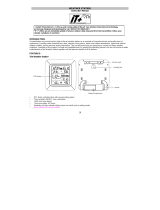 La Crosse Technology wireless weather station User manual
La Crosse Technology wireless weather station User manual
-
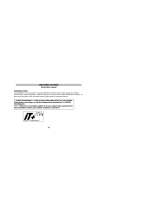 La Crosse Technology wireless weather station User manual
La Crosse Technology wireless weather station User manual
-
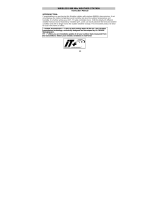 La Crosse Technology DCF-77 User manual
La Crosse Technology DCF-77 User manual
-
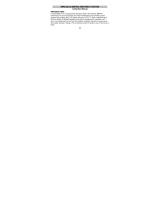 La Crosse Technology WS9620 Owner's manual
La Crosse Technology WS9620 Owner's manual
-
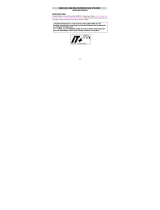 La Crosse Technology WS9090 User manual
La Crosse Technology WS9090 User manual





























